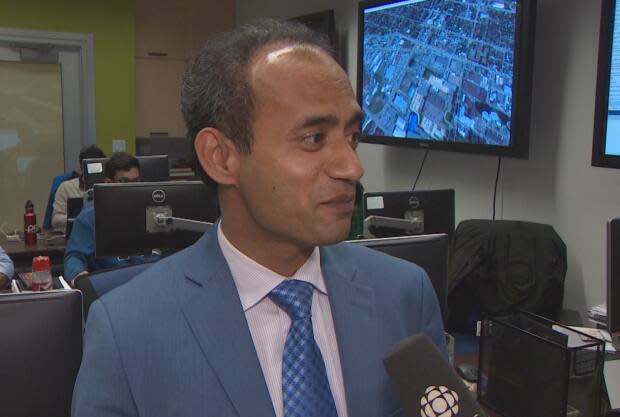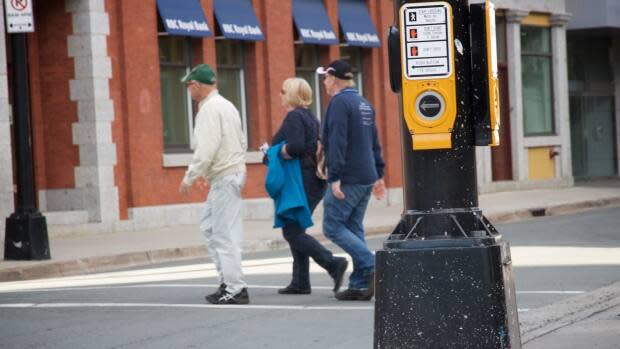Changes recommended for crosswalks in Halifax
Pushing a button to cross at a crosswalk in Halifax could soon be less common, if recommendations from the city's transportation standing committee move forward.
The majority of pedestrian intersections would automatically display the walk light. Cars would have to stop regardless of whether there's a person waiting to cross.
"It's very good news for pedestrians," said Ahsan Habib, a transportation professor at Dalhousie University, adding it might be frustrating for drivers.
A municipal staff report indicates there's no significant risk to the changes. But Habib cautions whenever new benefits are provided, there is always a potential for new issues.
Because intersections are where the majority of vehicle-pedestrian collisions happen, Habib said pedestrians should remain cautious.
"But automatic activation gives them the priority that we've been advocating for a long time, so I can see the benefit probably outweighs the risk," he said.

The crosswalks with automatic display would only require a button to be pushed between midnight and 6 a.m. They'll stay lit for the other 18 hours of the day.
Habib said he's concerned the new rules around timing could be confusing to some people, but city staff plan to install stickers at each intersection to indicate when the button needs to be pushed.
The move is well-timed with the COVID-19 pandemic and an emphasis on touch-free technology, Habib said, but it's been on the city's radar long before the virus came into play.
Accessibility changes
Right now, accessible pedestrian signals — audible signals like beeping — are activated only after someone holds down the crosswalk button for three seconds.
After engaging with people from the blind and visually impaired community, staff heard that the need to hold the button for three seconds was often a barrier to people who use a cane, guide dog, or have mobility issues.
Now, the audible signal could be heard with a single press of the button.
"This is probably the best decision [the city] ever made for tackling accessibility issues ... This will take us a long way to make our road space safer for mobility-restricted people," Habib said.
Increased congestion, noise pollution expected
Costs for the changes are expected to be "relatively minimal" and manageable within the current budget.
But, according to the committee's report, there could be an increase in noise pollution in some residential areas at night because of the changes to the accessible pedestrian signals.

Between midnight and 6 a.m., pressing the crosswalk button will always activate the audible signal.
There's also potential for delays for all road users, and an increase in greenhouse gas emissions due to increased vehicle congestion.
Some locations 'inappropriate' for automation
A staff report was completed over the course of the last few months with input from the public.
There are 274 pedestrian traffic signals in Halifax, according to the Jan. 21 agenda of the transportation standing committee that reviewed the staff report.
More than 100 of those intersections already display the walk signal automatically, a large portion of them in the downtown core.
After reviewing the remaining crosswalks in the municipality, the report found 93 more that should be adjusted to automatically display the walk signal.
The recommendations still need to be put before the city's traffic authority.
MORE TOP STORIES

 Yahoo Movies
Yahoo Movies 